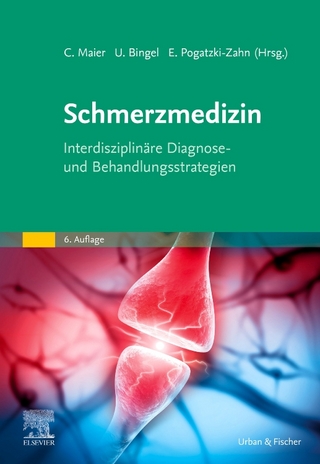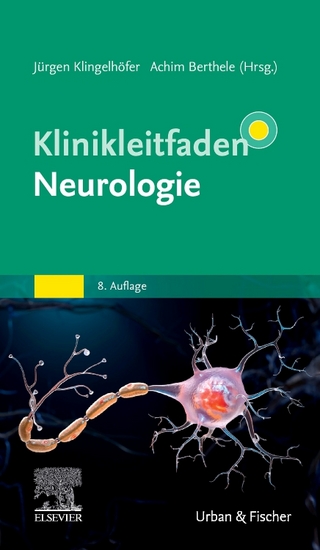
Handbook of Psychophysiology
Cambridge University Press (Verlag)
978-0-521-84471-0 (ISBN)
- Titel erscheint in neuer Auflage
- Artikel merken
The Handbook of Psychophysiology, 3rd Edition is an essential reference for students, researchers, and professionals in the behavioral, cognitive, and biological sciences. Psychophysiological methods, paradigms, and theories offer entry to a biological cosmos that does not stop at skin's edge, and this essential reference is designed as a road map for explorers of this cosmos. The scope and coverage in the Handbook have expanded to include both a context for and coverage of the biological bases of cognitive, affective, social, and developmental processes and behavior. In addition to updated coverage of the traditional areas of psychophysiology, coverage of the brain and central nervous system has been expanded to include functional neuroimaging, event related brain potentials, electrophysiological source dipole localization, lesion methods, and transcranial magnetic stimulation. It also includes a section on cellular and humoral systems with attention to the communication across and interactions among cellular, immunological, endocrinological, and neural processes.
John Cacioppo is the Tiffany and Margaret Blake Distinguished Service Professor and the Director of the Center for Cognitive and Social Neuroscience at the University of Chicago. He has authored or edited 12 books and more than 330 scientific articles and chapters. He is a member of the National Advisory Council on Aging of the US Department of Health and Human Services and holds a Special Chair in Social Neurosciences at the Department of Social Psychology at Vrije Universitat in Amsterdam. Louis G. Tassinary is Professor of Architecture and the Associate Dean for Research in the Department of Architecture at Texas A & M University. He was also the Director of the Environmental Psychophysiology Laboratory at the College of Architecture at Texas A & M University from 1991–2001. He has written many articles for journals including Psychological Science, Journal of Environmental Psychology, Cognition and Emotion, and Journal of Personality and Social Psychology. Gary G. Berntson received his Ph.D. in psychology and life sciences from the University of Minnesota, and then completed NSF and USPHS postdoctoral fellowships at Rockefeller University before moving to Ohio State University, where he is currently a Professor of Psychology, Psychiatry and Pediatrics, and a member of the Neuroscience graduate program. He is the Secretary and a member of the Board of the Society for Psychophysiological Research.
1. Introduction: interdisciplinary approaches to classic questions about the mind John Cacioppo, Louis G. Tassinary and Gary G. Berntson; Section I. Foundations of Psychophysiology: Part I. Central Nervous System: 2. Elements of functional neuroimaging Tor Wager, Luis Hernandez, John Jonides and Martin Lindquist; 3. Electroencephalography and high density electrophysiological source localization Diego Pizzagalli; 4. Event-related brain potentials: methods, theory, and applications Monica Fabiani, Gabrielle Gratton and Kara Federmeier; 5. Application of transcranial magnetic stimulation (TMS) in psychophysiology Bruce Luber, A. Peterchev, T. Nguyen, A. Sporn and Sarah H. Lisanby; 6. The lesion method in cognitive neuroscience Michael Koenigs, Dan Tranel and Antonio R. Damasio; Part II. Autonomic and Somatic Nervous System: 7. The electrodermal system Mike Dawson and Diane Schell; 8. Cardiovascular psychophysiology Gary G. Berntson, Karen Quigley and Dave Lozano; 9. Gastrointestinal response Robert Stern, Max Levine, Kenneth Koch and Eric Muth; 10. The respiratory system Tyler Lorig; 11. The sexual response Eric Jannsen, Nicole Prause and James Geer; 12. The skeletomotor system: surface electromyography Louis G. Tassinary, John T. Cacioppo and Eric J. Vanman; Part III. Cellular and Humoral Systems: 13. The neuroendocrinology of stress George Chrousos and Gregory Kaltsas; 14. Reproductive hormones Charles Snowdon and Toni Ziegler; 15. Innate and cell-mediated immunity: basic principles and psychophysiological influences Firdaus Dhabhar; 16. Psychosocial effects on humoral immunity: neural and neuroendocrine mechanisms Virginia Sanders, Nicholas Kin and Georg Ponatz; Section II. Elements and Principles: Part IV. Thematic Psychophysiology: 17. Behavioral genetics A. Courtney DeVries and Randy Nelson; 18. Probing the mechanisms of attention Michael Posner, M. Rosario Rueda and Philipp Kansk; 19. Integrative physiology: homeostasis, allostasis and the orchestration of systemic physiology Gary G. Berntson and John Cacioppo; 20. Developmental psychophysiology: conceptual and methodological issues Nathan Fox, Louis A. Schmidt, Heather A. Henderson and Peter Marshall; 21. Interoception Barry Dworkin; 22. The anatomy and physiology of the motor system in humans Ana Solodkin, Petr Hlustik and Giovanni Buccino; 23. The neural basis of affective and social behavior Ralph Adolphs and Michael Spezio; 24. Language Marta Kutas, Kara Federmeier, Jenny Staab and Robert Kluender; 25. Emotion and motivation Margaret M. Bradley and Peter Lang; 26. Stress and illness Timothy Smith, Bert Uchino, Julianne Holt-Lunstad, Rebecca Campo and Maija Reblin; 27. Sleep and dreaming Terry Pivik; Part V. Applications: 28. Psychophysiology in research on psychopathology Greg Miller, J. Christopher Edgar, Jennifer Keller and Wendy Heller; 29. Detection of deception William Iacono; 30. Neuroergonomics: applications of neuroscience to human factors Arthur Kramer and Raja Parasuraman; 31. Psychophysiological contributions to behavioral medicine and psychosomatics Andrew Steptoe; 32. Environmental psychophysiology Russ Parsons; Part VI. Experimental Design, Data Representation, and Data Analysis Issues: 33. Psychometrics Michael Strube and Laurel Newman; 34. Methodology Richard Jennings and Peter Gianaros; 35. Biosignal processing Gabriele Gratton; 36. Data storage formats in neuroimaging: background and tutorial John Herrington, Bradley Sutton and Gregory Miller.
| Erscheint lt. Verlag | 5.3.2007 |
|---|---|
| Zusatzinfo | 23 Tables, unspecified |
| Verlagsort | Cambridge |
| Sprache | englisch |
| Maße | 228 x 288 mm |
| Gewicht | 2220 g |
| Themenwelt | Geisteswissenschaften ► Psychologie |
| Medizin / Pharmazie ► Medizinische Fachgebiete ► Neurologie | |
| Medizin / Pharmazie ► Medizinische Fachgebiete ► Psychiatrie / Psychotherapie | |
| Naturwissenschaften ► Biologie ► Humanbiologie | |
| Naturwissenschaften ► Biologie ► Zoologie | |
| ISBN-10 | 0-521-84471-1 / 0521844711 |
| ISBN-13 | 978-0-521-84471-0 / 9780521844710 |
| Zustand | Neuware |
| Haben Sie eine Frage zum Produkt? |
aus dem Bereich



